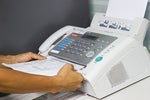The phantom heat of empty space might soon be detectable
A Hiroshima University team has designed a feasible way to detect the Unruh effect, where acceleration turns quantum vacuum fluctuations into observable particles. By using superconducting Josephson junctions, they can achieve extreme accelerations that create a detectable Unruh temperature. This produces measurable voltage jumps, providing a clear signal of the effect. The breakthrough could transform both fundamental physics and quantum technology.
Read more